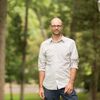Students of botany would tell you that a seed is a vesicle for a developing plant embryo. In every seed lay a nascent tree, or vine, or wildflower, protected and enveloped - and awaiting conditions suitable for germination and the first steps on the path to plant adulthood. Each fertile seed is a little package of hope sent out to find new habitats in which to establish a community. Each seed carries with it the faith - the certainty, even - that the seasons will roll onward and spring will bloom again.
The human species has invested our own faith in seeds ever since the dawn of agriculture some 10,000 years ago. For millennia, we have grown our crops each year and set aside seeds with which to propagate the same crops in the following season. Our recognition of the potential in every seed is likely one of the keys to our incredible success as a species. Great civilizations sprung up in the places where our seeds were sown.
In modern times, as our populations grew and our reliance on agriculture became greater, so grew our consciousness of the fact that the sustenance of the global population was dependent on stewardship of the seed resources we had developed. Our faith in seeds had become not just a matter of sustaining local populations from year to year, but a requisite for the survival of humanity. There is no example of this latter-day faith in seeds more poignant than the life of the great Russian botanist and plant breeder, Nikolai Vavilov.
As director of the All-Union Institute of Agricultural Sciences in Leningrad from 1924-1935, Vavilov traveled the globe gathering seeds of the world's crop plants. Along the way he recognized that humans had domesticated key crops the world over, and felt compelled to preserve that legacy as a seed bank in Leningrad. By 1941, as Hitler's armies bore down on that city - with intent, some believe, to capture what amounted to the largest collection of crop seeds on Earth - Vavilov was withering away from malnutrition in a Siberian Gulag (in part because Stalin considered his outspoken support for Darwinian evolution a threat to the Russian state).
With Leningrad blockaded and under siege, the staff of the Institute divvied up the seed collection. The rice specialist hid out with the rice seeds, the oat expert hunkered down with the oat seeds, and so on. By the time the smoke cleared, several of these individuals had become botanical martyrs, starving to death in isolation rather than eating the futures they were protecting. Vavilov, too, would succumb to starvation - far away in the Gulag. But the seeds of more than 100,000 crop varieties survived, thus preserving a piece of the agricultural heritage of much of the world and the food production prospects of post-war Russia. For millions, those seeds would provide a new beginning.
I think of seeds now while so many of us on the East Coast of the U.S. are still without homes to return to, our neighborhoods and communities flooded, torn apart, or set ablaze. Like seeds, our families and friends carry with them the dreams and ambitions that were born in an earlier season - in a life before Hurricane Sandy made landfall. And, like seeds, we now carry (perhaps more than anything) the hope of a new beginning.
Henry David Thoreau wrote, "Who could believe in prophesies that the world would end this summer while one milkweed with faith matured its seeds?" While this "optimism" on the part of the plant is innate and unconscious, it behooves us to emulate it.
For who better to look to for inspiration than the trees that weathered this same storm, roots clenched to the saturated soil while their kin fell around them? Who better to admire than the plants whose seeds developed and matured this summer and autumn with the blind faith that spring will come again and new opportunities will arise with it?
For what is a seed but hope for the future? And what choice do we have but to hope - for spring, for rebuilding... and for new beginnings?
